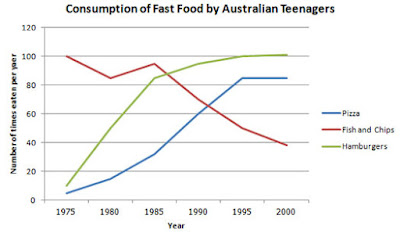STRATEGIES FOR FLOWCHART COMPLETION
By: Ridwan Sa'at
Flow-Chart Completion is one of the many IELTS reading questions. So, what is Flow-Chart Completion question?
In this type of IELTS reading question, you are asked to complete some blanks within the flow of the chart. You need to find word/s from the text that are suitable for the blanks.
It is very rare for the Flow-Chart Completion to appear at the beginning questions after one text. Normally it shows up in the second kind of question; perhaps after True, False and Not Given question or other.
Here are some strategies you can apply while handling this type of question:
1. The very first thing you need to do is read the instruction preceding the flow-chart. Reading the instruction is essential in that it tells us how many words you can fill in each blank. If, for instance, the instruction says: ".... write no more than two words....", your writing three words on the blank will be wrong and you are not going to get mark on that. So be careful and read the instruction.
2. Next is reading the heading and subheading if there are. This is helpful because it can help you to determine which paragraph/s to refer to. Most of the time the Flow-Chart Completion requires you to refer to certain paragraph/s only, not the whole text.. As I mentioned earlier, the Flow-Chart Completion may appear second or third following the text, reading the whole text again isn't necessary (you have done this when you first look at the text before even handling the first questions of the text. For a reminder, please see the skimming skills.
3. Then, read the chart underlining the key word/s. This is important as you will use these key words to scan the paragraph/s later. Imagine/think of synonyms of these words. Why? why do I have to do this thinking? Well, the words you are looking for using the key words will be synonyms or paraphrase of the key worlds.
Knowing the key words which are usually near the blank can also help you determine what kind of word/s you need for the blank (is it a noun, a verb, an adjective or a preposition).
4. After that, scan the paragraph (you know which one/s to refer to from reading the heading/subheading of the Flow-Chart) using the key words. Find the synonyms of these words and read around them when you come across. Try to look for the word/s suitable for the blank. When you find the word/s you are looking for, copy it/them and paste on the blank.
5. Finally, when you have completed all the blanks in this Flow-Chart Completion question, read again this complete flow-chart and make sure it all makes sense.
I hope this article help you handle the Flow-Chart Completion question. Happy practicing.
Flow-Chart Completion is one of the many IELTS reading questions. So, what is Flow-Chart Completion question?
In this type of IELTS reading question, you are asked to complete some blanks within the flow of the chart. You need to find word/s from the text that are suitable for the blanks.
It is very rare for the Flow-Chart Completion to appear at the beginning questions after one text. Normally it shows up in the second kind of question; perhaps after True, False and Not Given question or other.
Here are some strategies you can apply while handling this type of question:
1. The very first thing you need to do is read the instruction preceding the flow-chart. Reading the instruction is essential in that it tells us how many words you can fill in each blank. If, for instance, the instruction says: ".... write no more than two words....", your writing three words on the blank will be wrong and you are not going to get mark on that. So be careful and read the instruction.
2. Next is reading the heading and subheading if there are. This is helpful because it can help you to determine which paragraph/s to refer to. Most of the time the Flow-Chart Completion requires you to refer to certain paragraph/s only, not the whole text.. As I mentioned earlier, the Flow-Chart Completion may appear second or third following the text, reading the whole text again isn't necessary (you have done this when you first look at the text before even handling the first questions of the text. For a reminder, please see the skimming skills.
3. Then, read the chart underlining the key word/s. This is important as you will use these key words to scan the paragraph/s later. Imagine/think of synonyms of these words. Why? why do I have to do this thinking? Well, the words you are looking for using the key words will be synonyms or paraphrase of the key worlds.
Knowing the key words which are usually near the blank can also help you determine what kind of word/s you need for the blank (is it a noun, a verb, an adjective or a preposition).
4. After that, scan the paragraph (you know which one/s to refer to from reading the heading/subheading of the Flow-Chart) using the key words. Find the synonyms of these words and read around them when you come across. Try to look for the word/s suitable for the blank. When you find the word/s you are looking for, copy it/them and paste on the blank.
5. Finally, when you have completed all the blanks in this Flow-Chart Completion question, read again this complete flow-chart and make sure it all makes sense.
I hope this article help you handle the Flow-Chart Completion question. Happy practicing.

Comments
Post a Comment